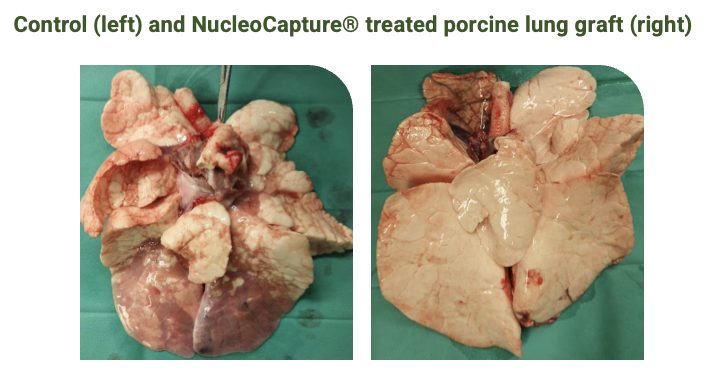Clinical Applications: Lung Transplantation
NucleoCapture® for Lung Transplantation
Primary graft dysfunction (PGD) is a type of lung reperfusion injury affecting 15–30% of lung transplant recipients within the first 72 hours, leading to early as well as late post-transplant mortality.
NucleoCapture® mode of action
Our preclinical studies show that the amount of Neutrophil Extracellular Traps (NETs) and other chromatin associated molecular patterns accumulated in lung graft can be as high as up to 500mg per lung. Neutrophil Extracellular Traps (NETs) and other chromatin associated molecular patterns accumulated in graft will be quickly released into recipient systemic blood circulation upon vascular connection of graft to recipient circulatory system. Such release trigger endothelial dysfunction, microvascular injury, vascular leak, metabolic changes, and a dysregulated inflammatory response leading to graft reperfusion injury and development of primary graft disfunction (PGD).
Early NucleoCapture® intervention in lung transplant recipients is designed to intercept NETs and other chromatin associated molecular patterns coming out from the lung transplant to prevent development of PGD.
Preclinical development
A randomized study of NucleoCapture® in porcine lung transplantation model showed that NucleoCapture® effectively removes NETs and other chromatin associated molecular patterns from porcine lung grafts. Upon lung retransplantation the recipients of NETs free grafts do not develop primary graft disfunction (PGD).
Clinical development
Santersus is preparing a clinical study of NucleoCapture® to prevent PGD in lung transplant recipients. The study is due to start patient recruitment in QII2026.

